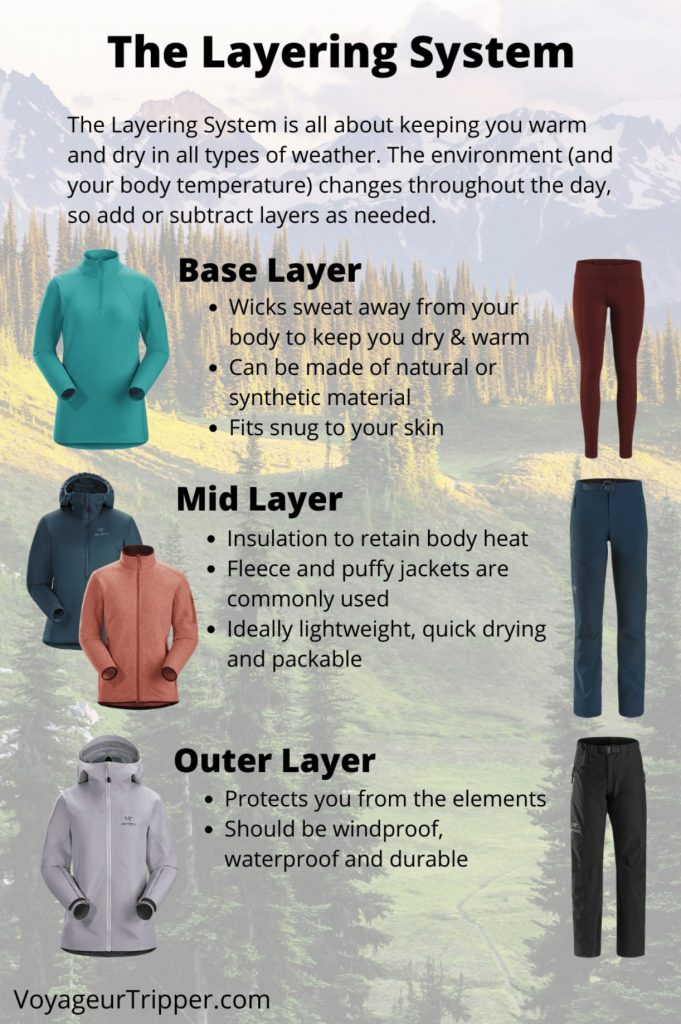Winter hiking․ The crisp air, the stunning snow-covered landscapes․․․ it’s magical, right? But that magic quickly fades if you’re shivering uncontrollably․ The key to enjoying those winter wonderland adventures? Layering, my friend, layering! And it’s not just about throwing on any old pair of pants․ We’re talking about a strategic system designed to keep you warm, dry, and comfortable, no matter what Mother Nature throws your way․ Let’s dive into the art of layering pants for winter hiking, so you can stay cozy and crush those trails․
Understanding the Importance of Layering Pants for Winter Hiking
Why can’t you just wear one super-thick pair of pants? Good question! Layering offers several crucial advantages․ Think of it like this: you’re building a customizable climate control system for your legs․ One thick layer can trap sweat, leading to chilling․ Multiple layers allow you to adjust to changing conditions and activity levels․
- Moisture Management: Wicking sweat away from your skin is critical to prevent hypothermia․
- Temperature Regulation: Add or remove layers as needed to stay comfortable․
- Flexibility: Different layers provide different levels of insulation and protection․
It’s about being adaptable and prepared for anything the trail throws at you․ Imagine reaching a summit and needing to shed a layer to avoid overheating – layering makes that possible!
Choosing Your Base Layer for Winter Hiking Pants
The base layer is your first line of defense against the cold, sitting directly against your skin․ Its primary job? To wick away moisture․ Forget cotton; it absorbs sweat and stays wet, making you colder․ Instead, opt for synthetic fabrics like polyester or merino wool․
Merino Wool vs․ Synthetics for Base Layer Pants
Both merino wool and synthetics have their pros and cons․ Merino wool is naturally odor-resistant and feels soft against the skin․ Synthetics are generally more affordable and dry faster․ Which one is right for you? It depends on your budget, preferences, and the length of your hikes․ For multi-day trips, merino wool’s odor resistance is a huge plus!
Selecting the Mid-Layer: Insulating Pants for Winter Hiking
The mid-layer provides insulation, trapping warm air to keep you toasty․ Fleece pants or lightweight insulated pants are excellent choices․ The key here is breathability․ You don’t want to overheat and sweat excessively․
Fleece vs․ Insulated Pants: Which Mid-Layer is Best?
Fleece is a classic choice, offering good warmth and breathability․ Insulated pants, filled with synthetic insulation like PrimaLoft, provide more warmth for their weight․ Consider the temperature and your activity level when making your decision․ Are you going to be moving fast and generating a lot of heat? Fleece might be sufficient․ Facing sub-zero temperatures? Insulated pants are your friend․
- Fleece: Breathable, affordable, good for moderate cold․
- Insulated Pants: Warmer, lightweight, ideal for extreme cold․
The Outer Layer: Protective Shell Pants for Winter Hiking
The outer layer protects you from the elements: wind, snow, and rain․ Look for waterproof and windproof shell pants․ Breathability is also important, but prioritize waterproofness if you’re expecting wet conditions․
Waterproof vs․ Water-Resistant Shell Pants
Waterproof pants offer the best protection against heavy rain and snow․ Water-resistant pants can handle light precipitation but may wet out in prolonged exposure․ Consider the typical weather conditions in your hiking area․ Are you often hiking in wet snow? Invest in waterproof pants․ Are you mostly dealing with dry, cold conditions? Water-resistant pants might suffice․
Putting It All Together: Layering Pants for Winter Hiking in Practice
Now that you know about each layer, let’s talk about how to combine them effectively․ Start with your base layer․ Add your mid-layer when the temperature drops or when you stop moving․ Keep your shell pants in your pack and pull them on when it starts to snow or rain․ Don’t be afraid to experiment and adjust your layers based on your comfort level․
Adjusting Your Layers on the Trail
The key to successful layering is being proactive․ Don’t wait until you’re freezing to add a layer․ Start layering before you get cold, and remove layers before you start sweating excessively․ Listen to your body and adjust accordingly․ Remember, comfort is key to enjoying your winter hike!
FAQ: Layering Pants for Winter Hiking
What if I don’t have dedicated hiking pants?
While dedicated hiking pants are ideal, you can make do with what you have․ Focus on the principles of layering: moisture-wicking base layer, insulating mid-layer, and protective outer layer․ Avoid cotton at all costs!
How many layers are too many?
There’s no magic number, but generally, three layers are sufficient for most winter hiking conditions․ If you’re hiking in extremely cold temperatures, you might consider adding a fourth layer, such as a second mid-layer․
What about gaiters? Are they necessary?
Gaiters are highly recommended for winter hiking, especially if you’re hiking in deep snow․ They keep snow out of your boots, preventing your feet from getting wet and cold․
So, there you have it! Layering pants for winter hiking doesn’t have to be complicated․ By understanding the principles of layering and choosing the right materials, you can stay warm, dry, and comfortable on your next winter adventure․ Don’t let the cold keep you indoors; embrace the beauty of winter with confidence; Now get out there and explore! Remember to always check the weather forecast before you go․ Happy trails!






